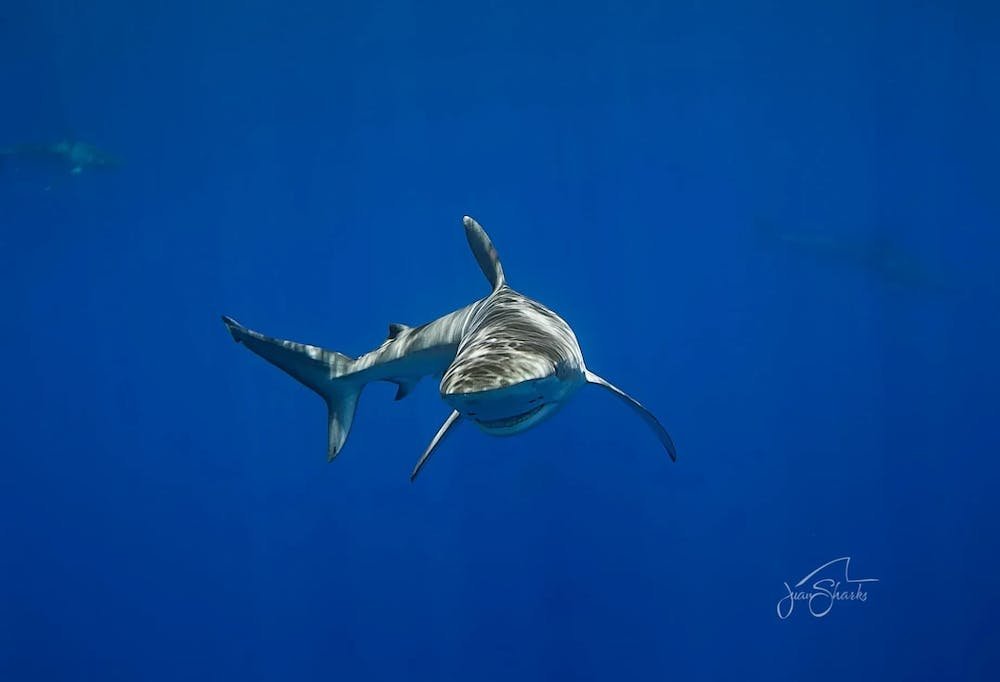Imagine everyone is armed with a lethal weapon and no one can audibly speak, how would we communicate? For sharks, this is the reality.
Research shows that sharks cannot audibly make noise, and therefore do not communicate through sound. Scientists have not yet found an organ in sharks that is capable of producing sound, thus their communication is limited to other methods. Through extensive research, various ways of interaction have been revealed in shark species. Most species communicate through territorial body language. Territorial body language is defined as using powerful movements and behaviors to convey dominance. Body language is a shark’s way of “talking it out,” (Ocean Ramsey, ‘What You Should Know About Sharks’). They demonstrate various signals and display certain body language to establish dominance in the water column and communicate with one another.
Within the water column, sharks display a strict social hierarchy. This hierarchy poses different levels of dominance based on the structure and place of sharks within the water column. The most dominant individuals assert themselves highest in the water. The more submissive individuals are deeper in the water. The dominant species swim closer to the surface and practice many behaviors to maintain this dominant role. This behavior relays to other individuals by preserving their space as the highest individual in the water column. However, the hierarchy and placement of sharks can change at any given time, and various behaviors can influence and challenge the dominance of individuals.
Some of the displays sharks use to challenge one another and decide dominance in the water include various swimming patterns. For sharks, swimming patterns and behaviors are of great importance to communicate, as they cannot audibly make a sound. Some of the swimming behaviors commonly seen in shark species include Parallel Swimming, following, and piggybacking. Parallel Swimming is the action in which two sharks swim next to each other to size each other up and see who is larger. The larger shark is usually established as being more dominant, but every scenario can vary, and sharks can display more aggressive behavior even if smaller in size. Following is another swimming pattern that includes a more dominant shark following closely behind a more submissive shark to push the shark out of its space. This is similar to tailgating someone on the freeway after being frustrated with driving behind that person. Following happens quite frequently in the water column and can occur out of annoyance or intimidation. The third swimming pattern is called piggybacking. This shark’s behavioral pattern establishes dominance over another shark through physically communicating the established social hierarchy in the water column. The more dominant sharks are higher in the water with more submissive species deeper in the water. Piggybacking refers to this shark hierarchy by intentionally establishing dominance over another shark by physically going on top of the more submissive shark to push that shark deeper into the water and further submit to the above shark in the social hierarchy. These behaviors use space, physical contact, and swimming patterns to maintain the pyramid structure in the ecosystem.
Although some species of sharks may prefer solitude, when seen in schools, they resort to these patterns and behaviors to assert their position in the water with unfamiliar individuals. Again, sharks do not have a sensory organ capable of making sound, thus they cannot speak or communicate through noises. Species-to-species interactions often involve these swimming patterns because they are one of the most resourceful ways to communicate as individuals vary in the ecosystem. Communication through body language is commonplace in shark behavior. Hence the importance of your body language when diving with sharks!



